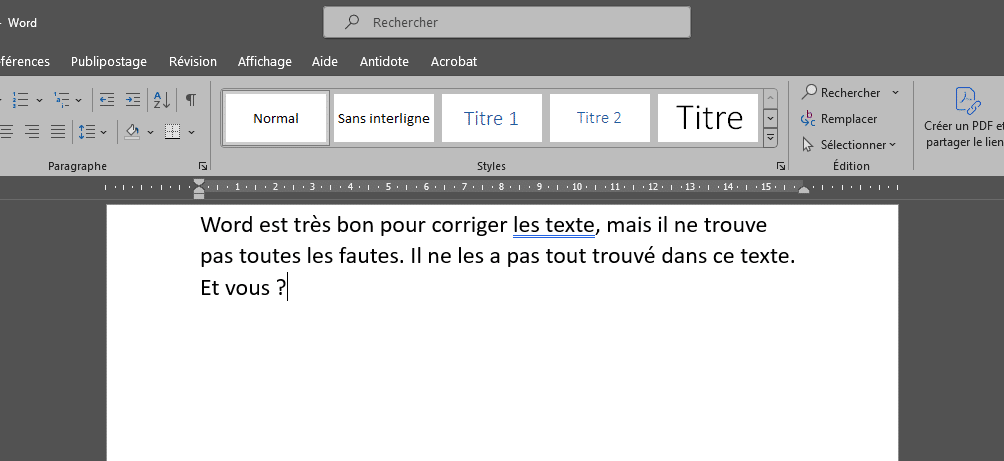What is proofreading?
It’s exactly what you think, it hasn’t changed since childhood: after writing a text, you have to reread it, i.e. check:
- the spelling;
- syntax;
- punctuation;
- typography;
- concordance,
- particularly in the case of translation.
We’ve all experienced it: when you’re writing your degree thesis or your thesis, an article, a communiqué, you concentrate first on the content, on what you have to say. And when the time comes to proofread, our eyes glide over the text and even with our greatest willpower, we sometimes let a typing, syntax or grammar error slip through.
Confirm your texts to me before publication so that I can have them proofread by an outside eye. As the author of a text, we tend to overlook the typos that have crept into our writing. The more you work on a text, the more difficult it is to spot errors, especially when the most important thing is what the text says.
To avoid this, I suggest you reread your documents: I will not correct the content (although I will insert a comment in the margin in case of doubt or obvious error), but I will concentrate on the French. I’ll be sure to point out any repetitions, awkwardness, suggest alternatives and, above all, I’ll be relentlessly hunting down typos, typing errors and grammatical mistakes.

Of course, text editors and other software can help us spot certain errors. Depending on their degree of development, the number of errors spotted will vary, but without a human to decide on certain cases and spot what hasn’t been detected, the text won’t be perfect.
